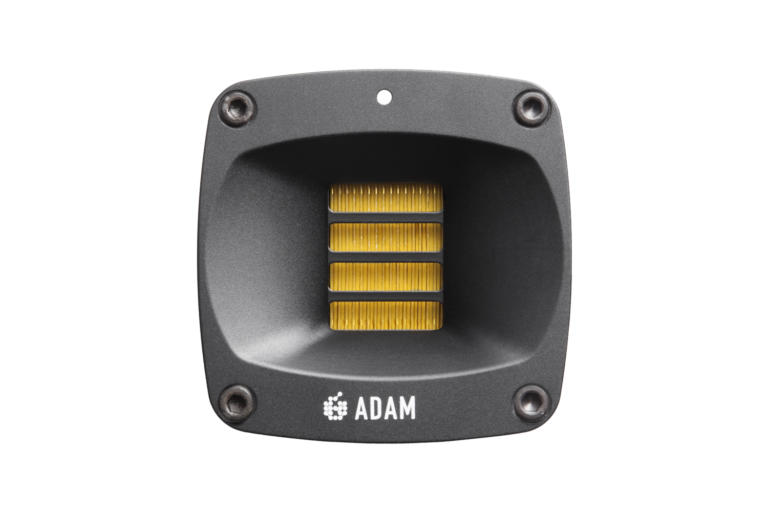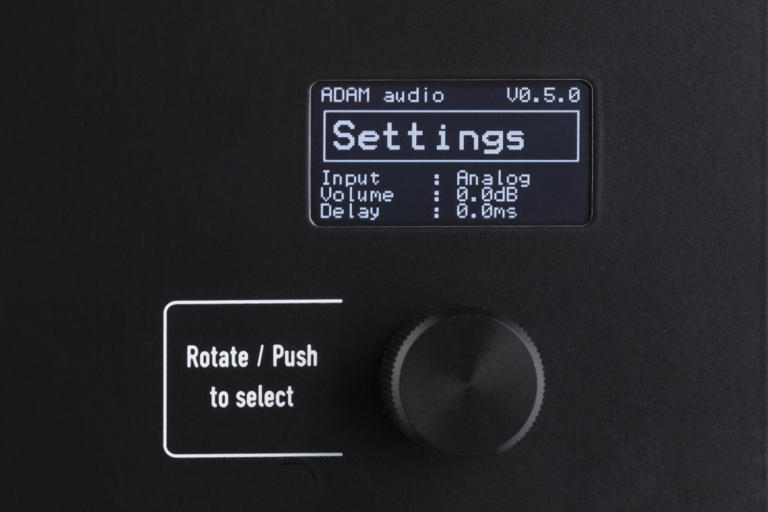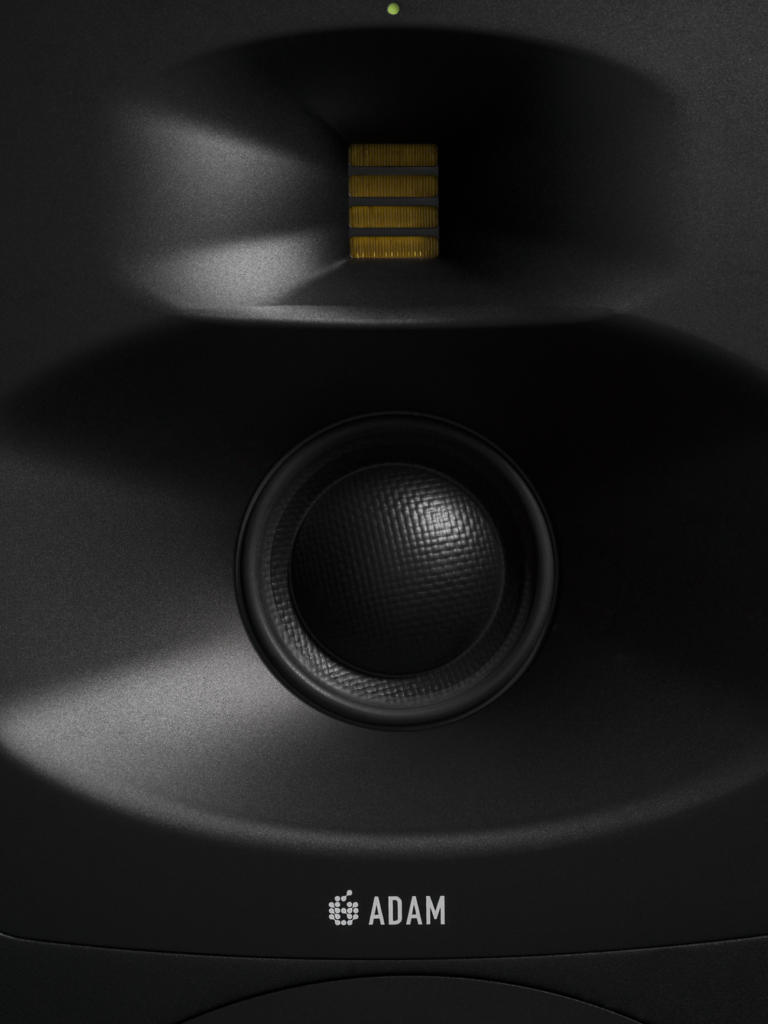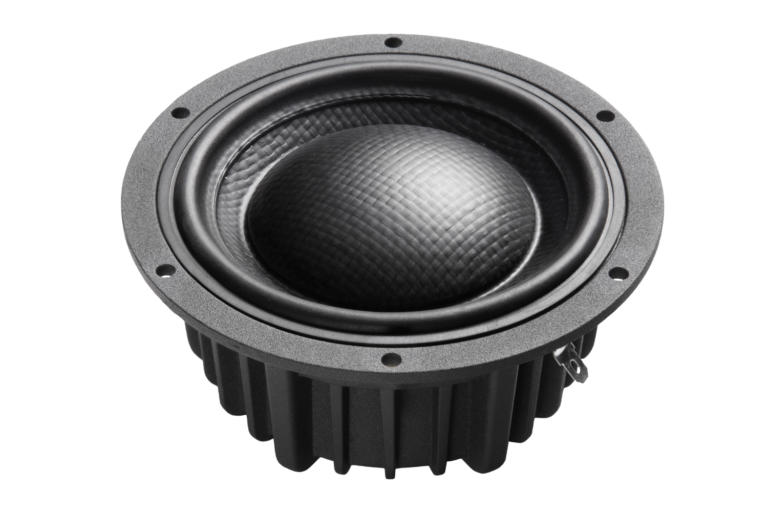ADAM Audio S Series Technology
S-ART™ – HIGH FREQUENCY DRIVER
All the models in the S Series employ the latest iteration of ADAM’s world-famous X-Art tweeter design, each handmade in Berlin as with all previous ADAM products. For the new range, the manufacturing process for each tweeter has been undertaken to an even higher standard of precision, with a more stringent post-factory testing regime – hence the new designation S-ART. The driver’s legendarily precise transient response and its ability to reproduce the finest of high-end details, free of distortion and with natural-sounding dynamics, are the cornerstones of ADAM Audio’s worldwide reputation as a leading manufacturer of indispensible audio equipment – tools that every professional should own.
THE X-ART TECHNOLOGY
The X-ART (eXtended Accelerated Ribbon Technology) tweeters and midranges incorporate a new approach to the Air Motion Transformer concept originally developed by Dr. Oskar Heil. ADAM Audio has improved upon this splendid idea utilizing superior geometries and materials to achieve unprecedented audio fidelity. X-ART strikes a new path concerning the kinematics of moving air, resulting in a dramatic improvement in the quality of audio reproduction.
The X-ART membrane consists of a pleated diaphragm in which the folds compress or expand according to the audio signal applied to them. The result is that air is drawn in and squeezed out, like the bellows of an accordion.
The ADAM X-ART design overcomes the piston-like motion of all conventional drivers and their inevitable problems (see previous page) by achieving an improvement in air loading by a factor of 4 over conventional transducers. To illustrate the basic principle by a comparison: When you breathe, your thorax is moving slowly whereas the air is moving comparably fast. Similarly, the X-ART diaphragm presses the air faster in or out of its folds than they themselves are moving. This markedly superior ”motor” is responsible for the unprecedented clarity and pristine transient reproduction that can be heard with the ADAM X-ART drive units.
In addition, the X-ART tweeter’s pleated membrane avoids the typical breakup/distortion and subsequent dynamic limiting at higher frequencies of stiffer voice coil designs, such as those found in dome and cone tweeters. Another positive result of the X-ART design is that the driving ”stripes” are in direct contact with the outer air and are cooled immediately.
MORE AREA = MORE DYNAMIC
Diaphragm area is another important factor in determining the dynamic range of a transducer. Basically, what you see is what you get. The cone area you can see is always the acoustically active area of the loudspeaker–this is true for practically all other drive units. By folding the X-ART diaphragm into the 3rd dimension (as seen from the listener’s position) a larger foil can be used, thus increasing the acoustically effective area of the diaphragm by a factor of more than 2.5 times. This results in higher dynamic output with extremely wide dispersion.
“…an excellent piece of craftsmanship…”
Audio Media was amongst the first magazines to review a new SX-Series model. About the tweeter they say:
“The famous ART tweeter as used in ADAM’s monitors has also undergone reconstruction in the X model providing 4dB higher efficiency and reproducing frequencies accurately all the way to 50kHz, which has made such a difference. The ART tweeter from ADAM has always been one of its strong points, but this new X-ART tweeter is a perfect balance in what is an excellent piece of craftsmanship. ”
(Audio Media)
HIGH PERFORMANCE DSP MODULE
The high-performance DSP engine was developed especially for the S Series and implements perfectly tuned crossovers, guaranteeing optimal frequency response, and a dynamic range greater than that offered by traditional analog crossovers, with no loss of resolution.
The DSP engine developed for the S Series provides users of all models in the range with a comprehensive array of options for in-room optimization. The intuitive OLED display allows control over overall level, two parametric shelving filters (one for the bass, the other for the highs) as well as six further fully parametric EQs with variable Q that may be assigned to boost or cut level at specific frequencies.
Five memories are also provided to store voicing presets. On most S Series models, the first two of these are supplied by ADAM and are non-editable; the first is known as ‘Pure’ and is the factory default tuning, with an extremely accurate frequency response. The second is a dynamic, natural-sounding response curve of ADAM’s own design, which is known as UNR™ (the Uniform Natural Response). The remaining three memories are available to store users’ own personal voicing presets. Only on the new S3H is the situation slightly different; as on the rest of the S Series range, the non-editable Pure and UNR settings occupy the first two presets, but only the final two are available for user presets. The third memory on the S3H is a further non-editable option designed to emulate the sound of what is possibly ADAM’s best-known monitor, the highly regarded S3A.
The DSP also offers limiter-based protection, AES3 digital inputs, and connectors for future expansion options. A USB connector allows software upgrades and facilitates connection to computer-based editing software, so that voicing adjustments or preset selection can be carried out without the need to access the rear panel of your monitors – a useful option if they are soffit-mounted.
ELE™ BASS DRIVER
The S Series ELE™ bass driver (short for Extended Linear Excursion) is a custom design created especially for and in parallel with the S Series cabinet and bass-reflex system. Realized by an ingenious combination of human engineering skill and the latest computer modeling techniques, it guarantees accurate audio reproduction at an extremely high resolution thanks to the precision-designed relationship between its low weight, optimized inner damping and highly rigid honeycomb cone, in conjunction with a basket which has been developed to eliminate unwanted resonance and distortion. The result is a bass driver that offers audio professionals a clarity and transparency hitherto unexperienced in low-frequency audio reproduction, operating with great precision even at high sound pressure levels.
Another notable feature of the ELE™ driver is its mechanical suspension, which operates optimally even over large excursions in either direction, allowing bass frequencies to be reproduced without distortion at high SPLs. Low-frequency energy is not limited as it is on similar systems, and the dynamics of the original audio are preserved in full. ‘Softer’, less highly tensioned driver suspensions may allow uncontrolled displacement at high SPLs. The highly tensioned linear S Series suspension system, by contrast, dampens the movements of the membrane at high output levels in a controlled manner and returns it to its rest position. The suspension is extremely robust and ensures distortion-free reproduction across the entire audible frequency spectrum.
The newly created long-throw speaker surround was also carefully engineered to be considerably more resilient than competing modern designs. This greatly increases the maximum possible excursion of the driver membrane, improving dynamic range and reducing distortion.
Finally, the loudspeaker basket is anodized by means of a specially optimized process during manufacture: the material’s black finish absorbs heat and provides another means by which the driver is kept cool.
MPS™ WAVEGUIDE
On the S5H and S5V, the DCH mid-range driver is set into an additional waveguide, the MPS (Mid-range Propagation System), which ensures that dispersion remains wide and smooth even over longer listening distances.
Milled from a solid block of aluminum, it hones the dispersion of the speakers to an even, uniform consistency, broad in the horizontal axis but tightly focused in the vertical plane. This minimizes potentially distracting reflections from the horizontal surfaces of significant studio furniture (for example mixing consoles), ensures that imaging remains constant, and creates a large, well-controlled and stable ‘sweet spot’, even at high output levels
SMA™ – SYMMETRICAL MAGNET ASSEMBLY
The newly developed magnet assembly in the bass driver, which ADAM Audio has named the SMA™ (Symmetrical Magnet Assembly), extends the maximum possible excursion of the electromagnetic voice coil by a factor of three compared to previous designs. The greatly extended travel ensures that the membrane operates in linear fashion over a relatively large distance, displaces a greater volume of air, and is capable of higher maximum output. The design allows the driver to accurately reproduce low-frequency signals without distortion, even when called upon to produce extremely large excursions. An ingenious built-in ventilation system also prevents warming of the large, custom-designed voice coils, and thus reduces the effects of power compression below the threshold of audibility. As voice coils warm, their ohmic resistance changes, damping and dynamic range are reduced, operational parameters change, and low frequencies are no longer reproduced cleanly. These unwanted effects are avoided in ADAM Audio’s new design.
The carefully engineered construction makes use of materials designed to encourage heat dissipation, and also keeps unwanted air turbulence and compression out of the magnet assembly, minimizing distortion.
The SMA™ also features several other innovations developed by ADAM Audio especially for the S Series:An elongated pole piece is employed in the low-frequency driver, extending beyond the magnet assembly to widen the reach of the resulting magnetic field and also to render it symmetrical. This keeps the driver’s performance linear, and reduces distortion in the output to a minimum. The magnet assembly operates over a larger travel than other comparable low-frequency drivers, allowing the voice coil much greater scope for downward motion and preventing it from being damaged at high output levels. The pole piece is also vented to encourage ventilation and maintain constant pressure in the magnet assembly. To reduce turbulence and air noise, the venting is aerodynamically rounded.
The S2V, S3H and S3V’s parabolic pole pieces prevent unwanted modulation of the driver’s magnetic field, drastically reducing non-linear second-order distortion, while demodulation rings help the magnetic field remain symmetrical and also minimize non-linear third-order distortion.
The largest S Series models, the S5H and S5V, have an additional refinement: another magnet of opposing polarity is situated on top of the elongated pole piece to further streamline the magnetic field lines and render them symmetrical. This ensures that the movement of the voice coil remains linear and keeps distortion to a minimum, even at high listening levels.
DCH™ MIDRANGE DRIVER
The 100mm (4 inch) mid-range driver, newly designed by ADAM Audio’s engineering department for the S Series, is a hybrid design: part cone and part dome driver. The extremely rigid one-piece drive element combines the clean decay characteristic and linear frequency response of a dome driver with the high excursion advantages of a cone driver, audibly improving transparency in the critical mid-range and producing excellent, distortion-free reproduction at high output levels. In conjunction with the high-quality S Series suspension, which properly controls large-scale excursions, wobble is completely excluded. In addition, the DCH’s output extends down an octave further than competing mid-range drivers (as far as 200 Hz), ensuring a clean and consistent dispersion without tonal coloration.
The DCH™ is manufactured using a specially laminated carbon composite material and its domed form renders it very stable. It behaves as a piston up to 8 kHz (one and a half octaves beyond its operational frequency response), does not produce unwanted vibrations and does not deform, even at high output levels. Unwanted ringing and resonances, of the kind that obscure sonic detail and produce listening fatigue, are almost completely excluded, and reproduction remains extremely clean across the driver’s entire operational frequency range.
The robust construction of the DCH also allows it to be placed nearer to the S-ART treble driver. Together, the pair act as a more coherent sound source for the all-important mid-range information, making overall dispersion wider, more consistent and more accurate. Several features resembling those from the ELE bass driver also appear on the DCH™, suitably adapted, such as the linear magnet assembly and suspension and damping systems, vented pole piece, the heat-dissipating chassis/basket, and the large 65 mm (2.5 inch) voice coil. There are a few differences: for instance, the mid-range driver surround is manufactured from a specially formulated foam material. As with the low-frequency driver, fine, highly dynamic details are reproduced without coloration or filtering.




